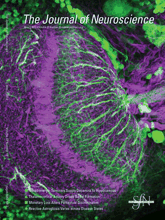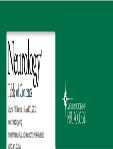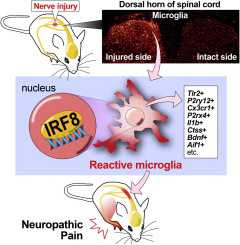J. Neurosci:脑部扫描能鉴别能人和懒人
2012-05-19 国际在线 国际在线
美国科学家近日表示,对研究对象脑部扫描显示能干的人和懒人的大脑在3个具体的区域会有所不同。 为了奖赏而愿意努力工作的人们在其脑部的叫做纹状体(striatum)和皮层(ventromedial prefrontal cortex)的部位存在更多的对神经发出信号的化学物质多巴胺(dopamine)。这两个区域都在与报酬奖励关联的感觉和动机导致个体行为发生变化方面,发挥着重要作用。 然而在为了报酬
美国科学家近日表示,对研究对象脑部扫描显示能干的人和懒人的大脑在3个具体的区域会有所不同。
为了奖赏而愿意努力工作的人们在其脑部的叫做纹状体(striatum)和皮层(ventromedial prefrontal cortex)的部位存在更多的对神经发出信号的化学物质多巴胺(dopamine)。这两个区域都在与报酬奖励关联的感觉和动机导致个体行为发生变化方面,发挥着重要作用。
然而在为了报酬而努力工作方面稍显被动的“懒人们”脑部,其“前脑岛”(anterior insula)区域存在更高含量的多巴胺。而这一部位与情绪和危机感有关。
多巴胺是一种用来帮助细胞传送脉冲的神经传导化学物质。联合执导这一研究的美国范德堡大学(Vanderbilt University)心理学家迈克尔▪特雷德韦(Michael Treadway)说:“过去,人们在老鼠身上的研究结果表明,多巴胺对于奖励动机具有关键性作用。但是这项研究提供给了我们关于多巴胺是如何决定奖励寻求者之间存在的个体差异的新信息。”
以上研究结果发表在最新一期的《神经科学杂志》上。(生物谷Bioon.com)

doi: 10.1523/JNEUROSCI.6459-11.2012
Dopaminergic Mechanisms of Individual Differences in Human Effort-Based Decision-Making
Michael T. Treadway1,*,Joshua W. Buckholtz1,2,*,Ronald L. Cowan3,4,6,Neil D. Woodward3,4,Rui Li5, M. Sib Ansari5,Ronald M. Baldwin5,Ashley N. wartzman1, Robert M. Kessler5, and David H. Zald1,3
Preferences for different combinations of costs and benefits are a key source of variability in economic decision-making. However, the neurochemical basis of individual differences in these preferences is poorly understood. Studies in both animals and humans have demonstrated that direct manipulation of the neurotransmitter dopamine (DA) significantly impacts cost/benefit decision-making, but less is known about how naturally occurring variation in DA systems may relate to individual differences in economic behavior. In the present study, 25 healthy volunteers completed a dual-scan PET imaging protocol with [18F]fallypride and d-amphetamine to measure DA responsivity and separately completed the effort expenditure for rewards task, a behavioral measure of cost/benefit decision-making in humans. We found that individual differences in DA function in the left striatum and ventromedial prefrontal cortex were correlated with a willingness to expend greater effort for larger rewards, particularly when probability of reward receipt was low. Additionally, variability in DA responses in the bilateral insula was negatively correlated with willingness to expend effort for rewards, consistent with evidence implicating this region in the processing of response costs. These findings highlight the role of DA signaling in striatal, prefrontal, and insular regions as key neurochemical mechanisms underlying individual differences in cost/benefit decision-making.
本网站所有内容来源注明为“梅斯医学”或“MedSci原创”的文字、图片和音视频资料,版权均属于梅斯医学所有。非经授权,任何媒体、网站或个人不得转载,授权转载时须注明来源为“梅斯医学”。其它来源的文章系转载文章,或“梅斯号”自媒体发布的文章,仅系出于传递更多信息之目的,本站仅负责审核内容合规,其内容不代表本站立场,本站不负责内容的准确性和版权。如果存在侵权、或不希望被转载的媒体或个人可与我们联系,我们将立即进行删除处理。
在此留言














#ROS#
59